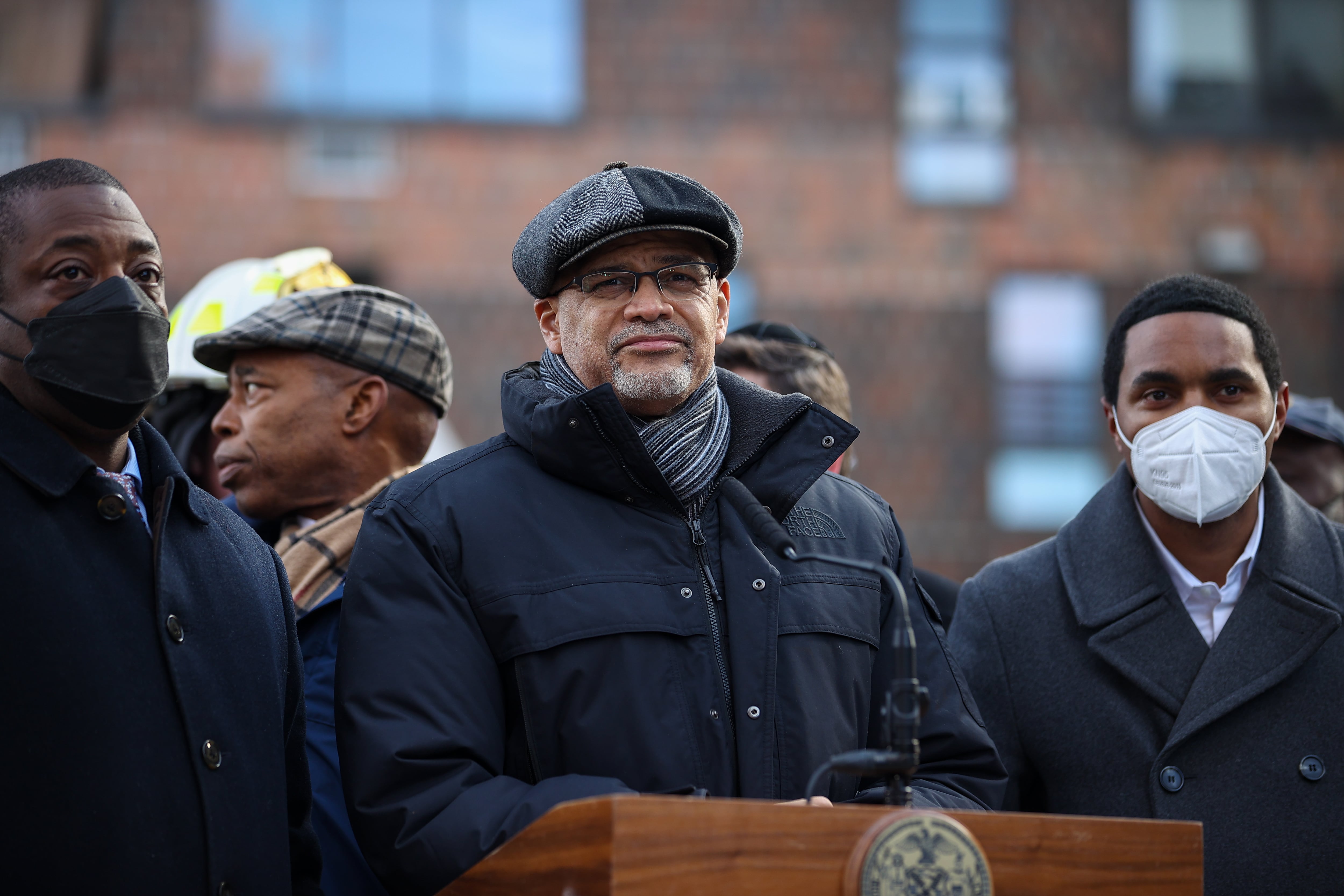New York City is in talks to create a remote option this school year and is working to iron out the specifics with the city’s teachers union, schools Chancellor David Banks said on Thursday.
“My goal is to create an option that will take us at the very least to the end of the school year,” Banks said at a virtual meeting of the Chancellor’s Parent Advisory Council, which is made up of parent leaders citywide. “If I could figure out a way to do a remote option starting tomorrow I would … It’s not quite as simple as that because you have to negotiate this stuff with the unions.”
He added: “I do think we can come up with something because there’s enough political pressure that has been put on.”
The city’s teachers union indicated Thursday morning that they are open to a remote option, but did not say what specific models they might support.
“We’ve called for a remote learning program since September, and we believe we need to do this,” Michael Mulgrew, the union’s president, said on Fox 5. “On the remote option, we don’t want to go back to 65% of the children staying home. So, for parents, I’m going to ask again: Please, if we have this option, use it judiciously.”
Banks has hinted since he took office that he is open to remote learning, even as he and Adams have emphasized the importance of in-person learning and have resisted calls to shut down school buildings in the face of a massive surge of coronavirus infections. More students and staff have reported positive coronavirus infections since the winter recess than the entire rest of the school year combined.
But despite the administration’s insistence on keeping schools open and requiring in-person attendance, absenteeism has skyrocketed in recent weeks as thousands of students have tested positive for the virus and many families are keeping their children home to avoid exposure.
Since the winter recess, daily attendance has not exceeded 76%, meaning roughly a quarter-million students are not receiving instruction on any given day, almost the population of the Broward County school district, the nation’s sixth largest system. (Attendance typically tops 90%.) And in-person learning is also being disrupted as staff members are infected and must stay home, with schools shuttling students to auditoriums in some cases or scrambling to find substitutes.
Still, Banks’ remarks are in tension with what Adams told lawmakers this week: The city would not be able to launch a remote option for at least six months.
Adams told reporters on Thursday that he is willing to consider a remote option and negotiate with the United Federation of Teachers, but did not offer any specifics about what that might look like.
“I’m willing to sit down and entertain, with the UFT, if there is a way to do a temporary remote option,” he said. “We do have to be honest, that there’s a substantial number of children, for whatever reason, parents are not bringing them to school. I have to make sure children are educated.”
Still, Adams said the fallout of remote learning is “unbelievable” and reiterated the importance of keeping students in school buildings, which he said are safe.
Creating a remote option for parents, rather than universal remote instruction, would represent a massive logistical undertaking. Hybrid learning, in which educators are responsible for students in person and when they’re learning remotely, created a significant staffing crunch last year. And a move back to a hybrid model would immediately raise questions about whether it’s possible to execute without shortchanging instruction for students who show up to buildings.
Banks hinted that one way to resolve that dilemma would be for teachers to livestream their classrooms, a model that educators have said is challenging to pull off — challenges that Banks acknowledged. The city’s current agreement with the teachers union prohibits schools from requiring teachers to livestream their classrooms. Banks said officials are meeting with the teachers union this afternoon.
“That’s my first goal was to say, ‘Can we turn that agreement around and just do a livestream and let kids just participate in the class?’” he said.
Banks also encouraged parents to talk with their school’s union chapter leaders to press for a remote option.
“Our parents are demanding a remote option,” Banks said. “Can we get a deal done with the UFT? That’s where it’s coming to.”
In a statement, Mulgrew indicated the union was not an impediment to creating a remote option. But a spokesperson did not say whether the union would support a model that involved teachers livestreaming their classrooms nor did she provide other details about how the union wants to structure virtual instruction.
“Clearly the chancellor has been misinformed about the UFT’s position,” Mulgrew said in a statement. “We have long called for an instructionally sound remote option and have been speaking directly to the mayor about creating one, a program that will work for students.”
Christina Veiga contributed to this story.





